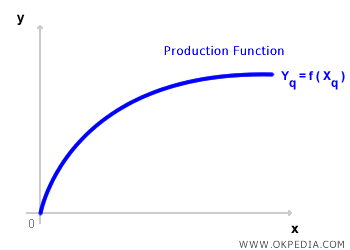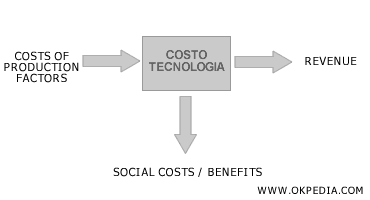Production
Production is the process of combining productive factors (resources, information, technology, capital, labor, etc.) to generate goods or services that fulfill economic needs, either directly or indirectly. At its core, production is a transformation process—raw materials and inputs are converted into useful products that create utility. This process takes place within firms, which determine both the quantity of output and the production methods they employ, including the technology used. By the end of the production process, the firm has created a product (a good or service) while consuming some of the initial resources. The production process can be illustrated through the following schematic:

At its most fundamental level, production involves taking productive factors (inputs) and transforming them into finished goods or services (outputs) through a structured production process. The "box" at the center of the diagram represents the firm's chosen production method and the technology it employs. The essence of production lies in the strategic combination of these inputs. The sequence of operations required to manufacture a product is referred to as the production cycle. This cycle begins with the intake of raw materials and concludes when the finished product is ready. Along the way, the production process generates semi-finished goods, known as intermediate goods, which are subsequently used to manufacture final products. A basic production function can be represented as follows:

The production function simplifies all productive factors into two primary categories: labor and capital. Labor encompasses all human contributions—whether manual or intellectual—that drive the creation of goods and services. Capital, by contrast, includes all non-labor inputs such as machinery, raw materials, and financial resources. A firm's productive activities can focus on manufacturing physical goods or delivering services. Additionally, firms may engage in trade and distribution. Based on the type of product, production is categorized into economic sectors (primary, secondary, and tertiary). A production function involving a single productive factor can be graphically represented on a Cartesian plane, plotting the quantity of the factor employed (x-axis) against the amount of output produced (y-axis).

Technological Constraint. The maximum output a firm can achieve is dictated by its technological constraints. For example, if a company's machinery has a full-capacity output of 100 units per day, production cannot exceed this limit. To expand output, the firm must either invest in additional machinery (capital) or adopt more efficient production technology. In the short run, production levels can only be adjusted within the limits of existing equipment and technology. However, in the long run, firms can upgrade their technology and expand their production capacity. It's also important to note that production doesn't just generate outputs—it also produces externalities. These are side effects that, while not directly accounted for by the firm, have a broader impact on society. A classic example of a negative externality is pollution.
Economic Constraint. Production decisions are not solely dictated by technological factors. More fundamentally, they are shaped by economic constraints. The previous input-output model approached production from a physical standpoint. Now, let's reframe it in economic terms.

Rather than focusing solely on productive factors, an economic perspective considers their costs. Each input has a market price—wages for labor, transportation costs, the price of raw materials, and so on. Even technology carries a cost in terms of research, expertise, and capital investment. In a competitive market, firms must strategically select their production technology, factor combinations, and output levels to ensure that total revenue exceeds total costs. This means that firms must sell enough output at a sufficient price to cover production expenses. Consequently, businesses must align their production strategies with market demand and competitive pressures.
To conclude this introduction, note that in the second model, the term "externalities" has been replaced by "social costs and benefits." A negative externality, such as pollution, imposes costs on society (a social cost). Even if the firm generating the pollution does not account for it in its own financial statements, these costs are borne by other businesses and households. Conversely, positive externalities generate social benefits, contributing to overall economic welfare.
